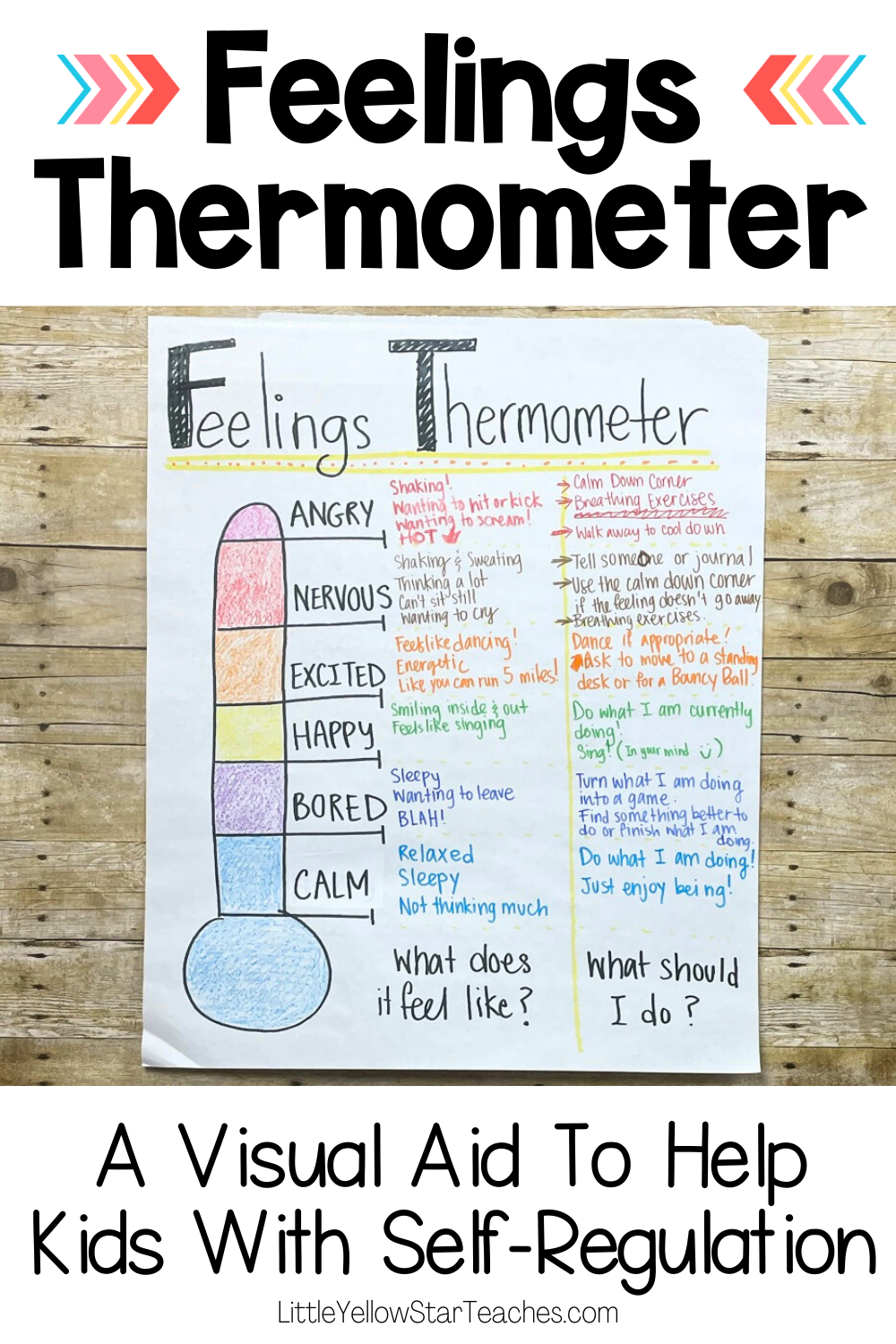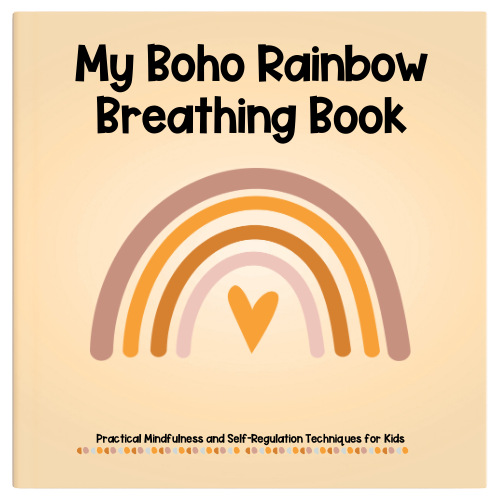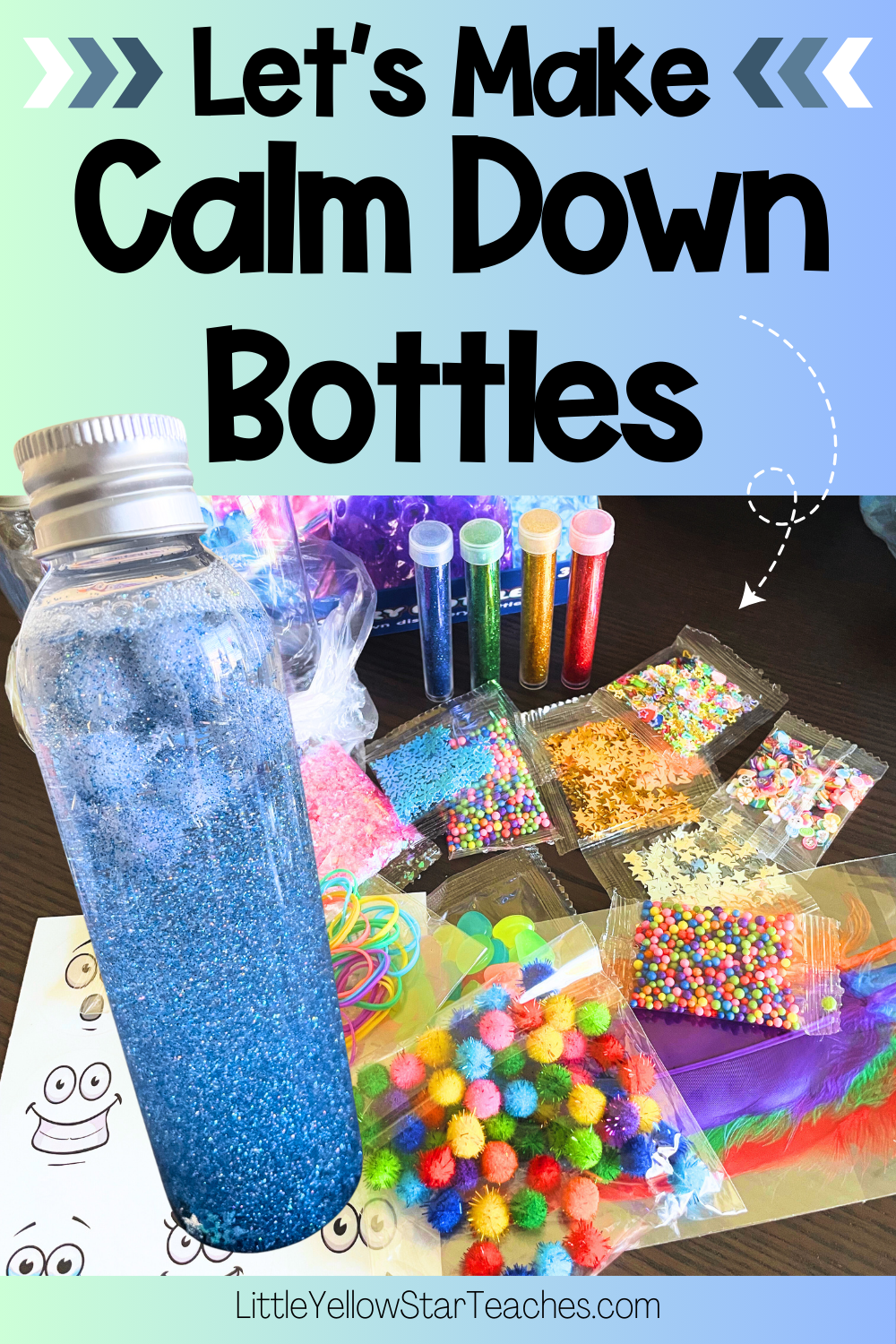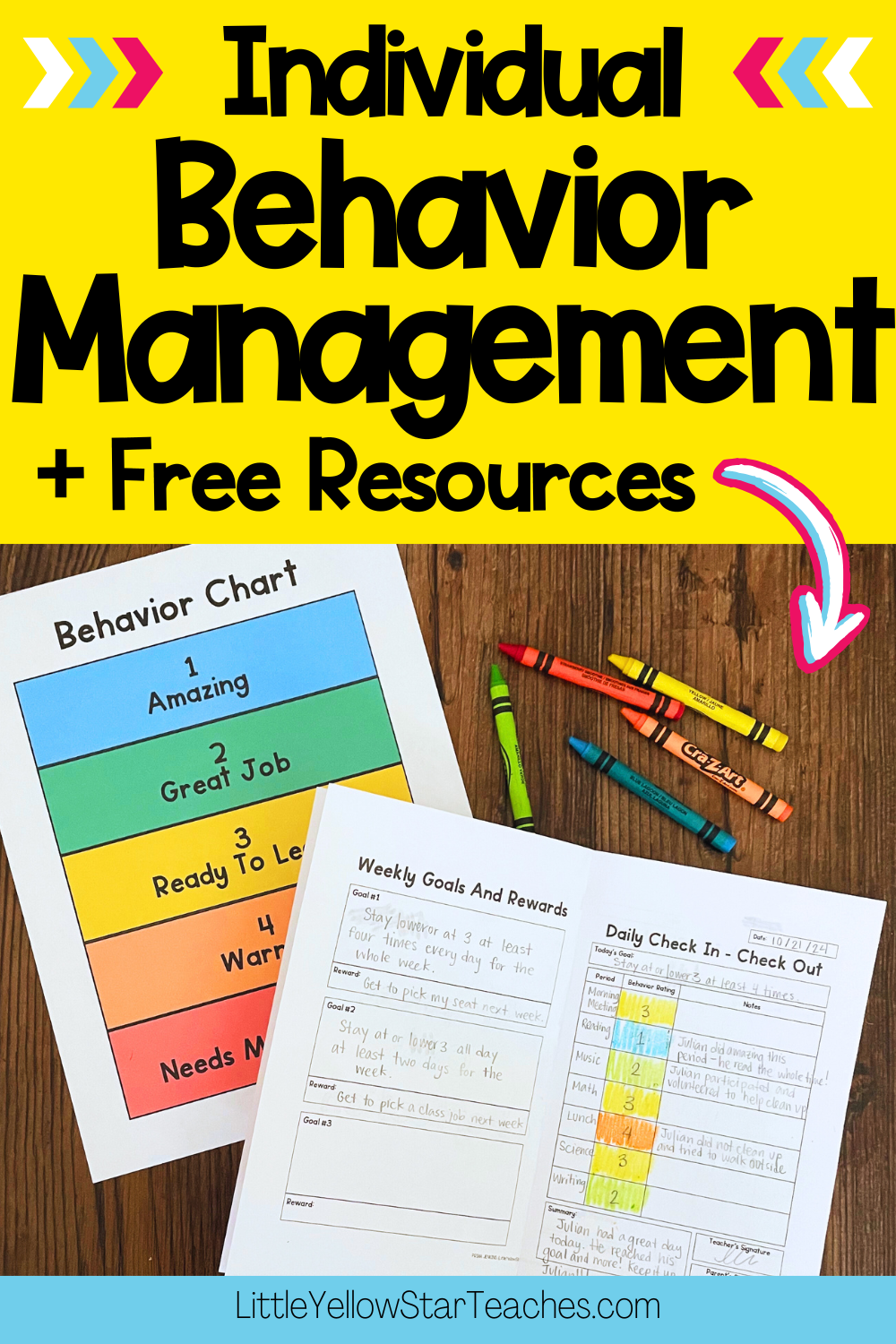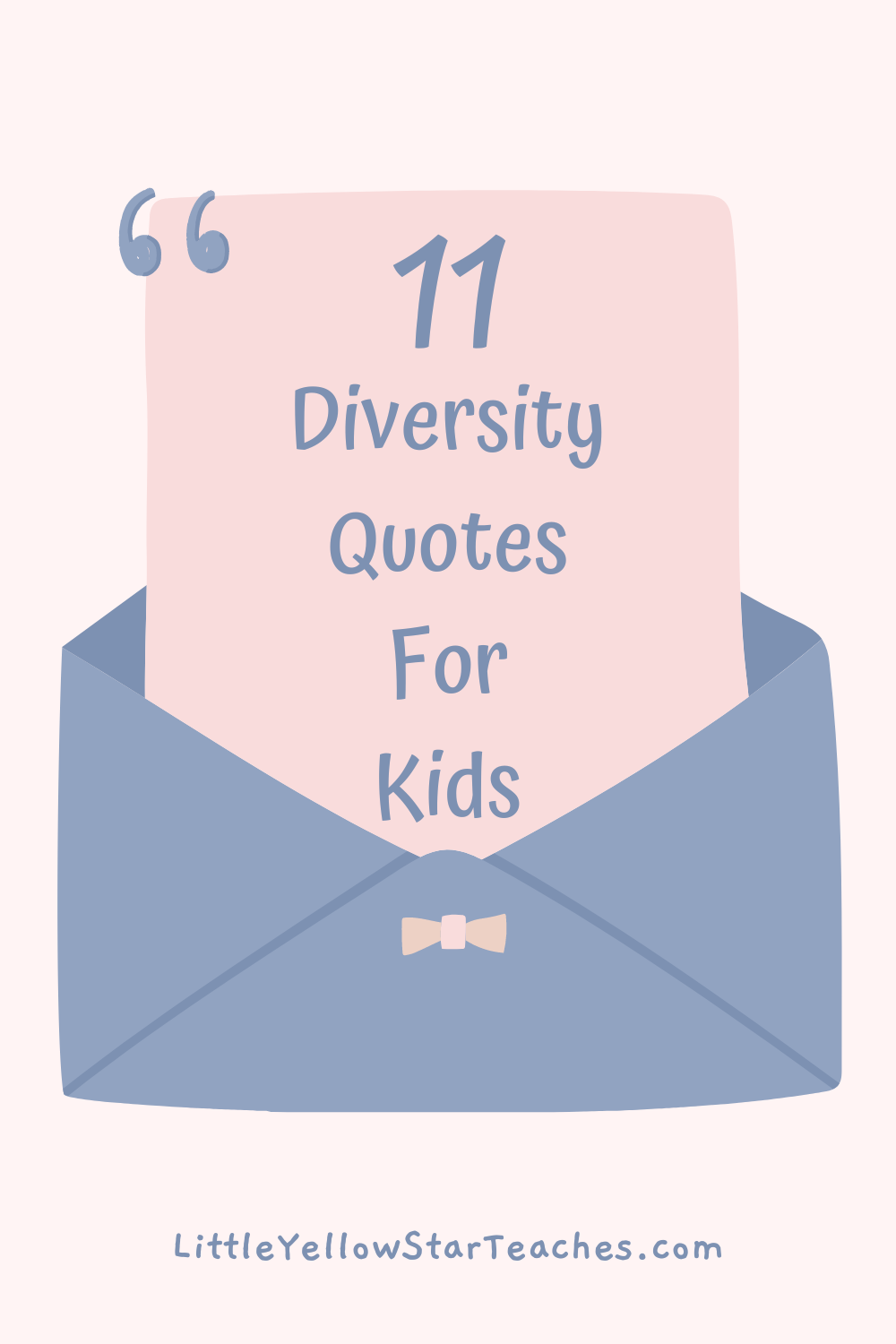Understanding and managing emotions is foundational, especially for children. As a former educator and now a parent, I’ve been on a continuous journey to find the most effective tools to foster emotional intelligence in children.
One standout tool is the Feelings Thermometer. This visual aid assists not only in identifying emotions but also in enhancing self-regulation. There are so many benefits to using the Feelings Thermometer, especially when teaching children about recognizing and naming emotions. As a grown-up, it’s still hard for me sometimes to acknowledge that I’m feeling certain emotions sometimes, such as “Stress!”
A Feelings Thermometer is also a great tool to use in association with your Calm Down Corner.
And hey! If you plan on creating a Calm Down Corner in the classroom or at home, check out the activity I have prepared in this blog post with free blank feelings thermometer to let you create a Family or Class Feelings Thermometer.
Why is Emotional Awareness Crucial?
Emotional awareness is the conscious recognition of one’s own feelings and the feelings of others. Research indicates that emotionally aware students generally possess superior coping strategies, translating into heightened mental well-being (Eisenberg, Spinrad, & Eggum, 2010). Moreover, this awareness enhances focus, comprehension, and retention, optimizing the learning journey.
Being able to pinpoint and verbalize feelings is pivotal to recognizing emotions. This isn’t just a skill for children – many adults grapple with it too. Once an individual recognizes one’s emotional state, it allows them to choose the appropriate coping mechanism to self-regulate. Without this awareness, how can we expect a child to determine the best strategy for self-regulation?
At the end of the day, emotional awareness not only helps a child learn better but also enhances their well-being.
What is a Feelings Thermometer?
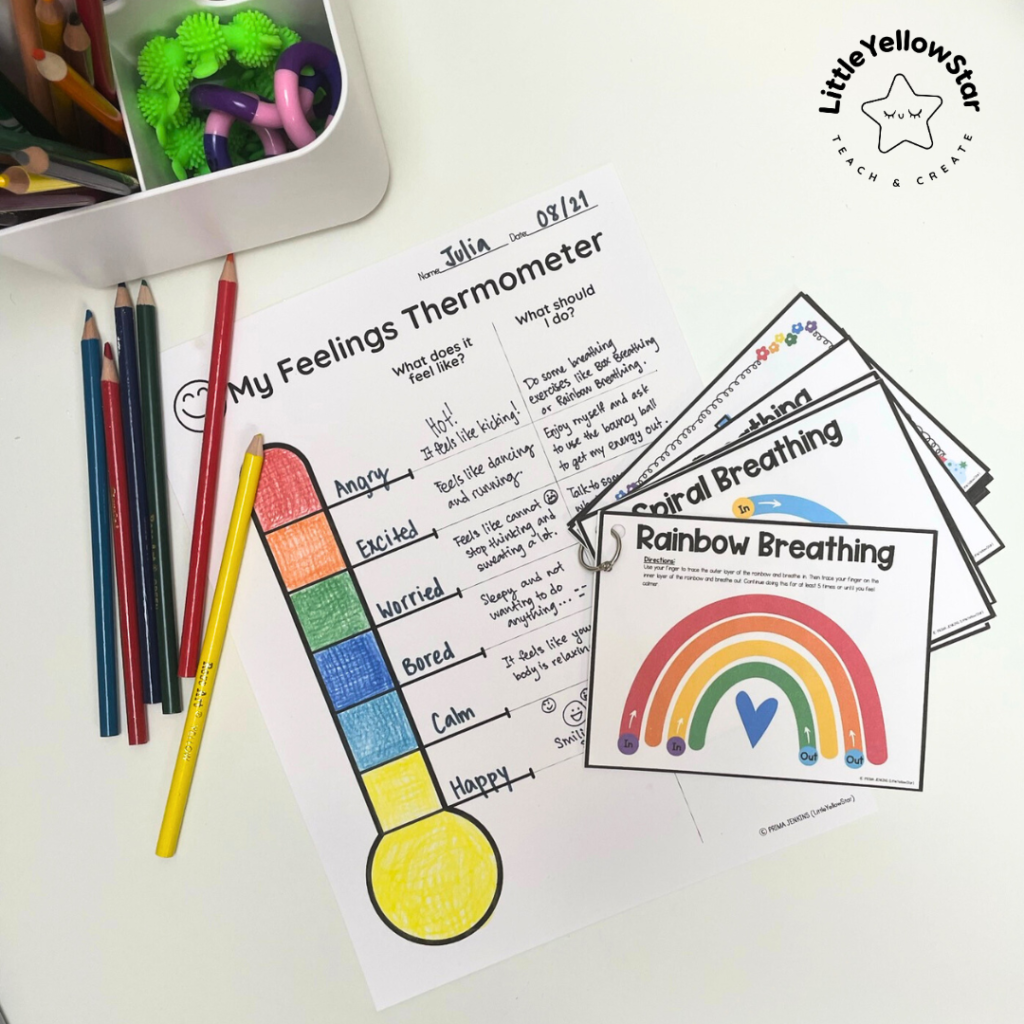
The Feelings Thermometer, also known as the Mood Thermometer, visually represents emotions on a gradient scale instead of one solid color like a regular thermometer. Each color typically symbolizes a specific emotional state, allowing children to map their feelings visually.
While I share this fantastic tool and what I have learned from my own research, I need to put this disclaimer. I am not a licensed child therapist or psychologist. If you know a child with deeper emotional concerns, please consult a specialist or professional therapist.
Check Out Rainbow Mindfulness Books and More!
Benefits of Integrating the Feelings Thermometer into Your Calm Down Corner:
- Aids in Self-awareness: Studies have shown that self-awareness exercises, like using the feelings thermometer, help individuals, especially children, identify their emotional triggers and patterns (Zins et al., 2004).
- Facilitates Communication: Sometimes, finding the right words to convey our feelings can be challenging. The feeling thermometer offers a tangible way to communicate these emotions.
- Supports Emotional Regulation: By identifying emotions, children can more easily navigate them, leading to healthier emotional responses.
- Promotes Reflection: The process of assessing one’s position on the feeling thermometer naturally leads to introspection.
- Provides Structure: The organized representation offers a consistent method to understand and communicate fluctuating emotions.
- Guides Decision-making: Recognizing intense emotions can help delay pivotal decisions until a more balanced emotional state is achieved.
Create Your Family or Class Feelings Thermometer
Creating a customized thermometer as a class or household activity can be fun and insightful. This is a great tool to add to your Calm Down Corner or other Safe Space you created for your child or students.
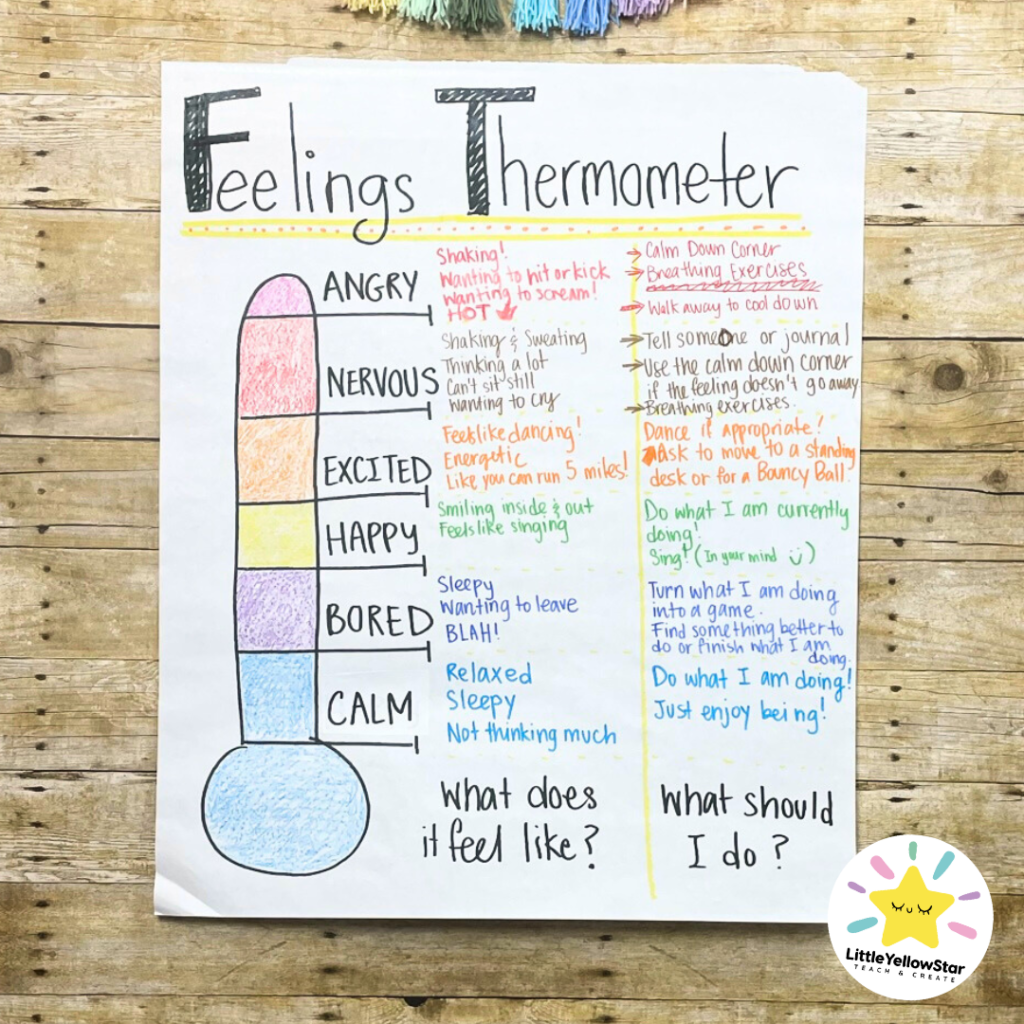
Here’s a step-by-step guide:
Materials:
- Anchor Chart Paper or Poster Board
- Markers, colored pencils, crayons
- Optional: Thermometer Print Out
Instructions:
- Brainstorming Session: Initiate a discussion about the range of emotions we feel and experience. Write down all the answers on a whiteboard, anchor chart, or paper.
- Pick six emotions and ask the children to rank them from positive to negative or what feels cold to hottest.
- Draw a blank thermometer on an anchor chart or poster board and separate it into six sections.
- Label the thermometer with the six emotions that the children selected and based the ranking on your discussion. Remember that a thermometer usually goes from cool to hot, so you could base it on what feels the most intuitive for you and the children.
- Optional: The children can create one along with you by giving them a blank thermometer.
- Ask the children to pick six colors and rank them similarly to represent the emotions. You can choose seven colors, but if you use six, the first two sections can be the same color.
- Color in the thermometer based on the discussion. If the children create their own Feelings Thermometer, you can allow them to pick their colors.
- Create a T-Chart next to the thermometer. Label the first column as “What does it feel like?” and the next column, “What should I do?”
- Discuss with the children how their bodies feel when they feel the different emotions on the thermometer, and write it next to the thermometer based on each section. Then discuss and write down the various strategies students can use when feeling those emotions.
- Place the Feelings Thermometer next to the Calm Down Corner or a space where it’s easy for the children to refer back to.
- Optional: You can also add different hand signals for each emotion so that you can use them to do a quick check-in with the children.
How To Use The Feelings Thermometer
Teach children to look at the Feelings Thermometer and identify how they are feeling. For example, if they are feeling “red,” which typically symbolizes anger, they can look at the coping strategies and pick one to implement. If they are unsure, think about which color they relate to most and how their body is feeling, are they feeling hot or cold.
Additional Ways To Use The Feelings Thermometer:
- Incorporate the Feelings Thermometer in your morning check-ins, after recess, or when there’s tension in the room.
- Use it during role-playing exercises such as, “Show me how you would feel if you are feeling yellow”
- Use it during role-playing exercises, such as “Show me how you would feel if you are feeling yellow.
- If you have different hand signals associated with other emotions, you can quickly check in with that.
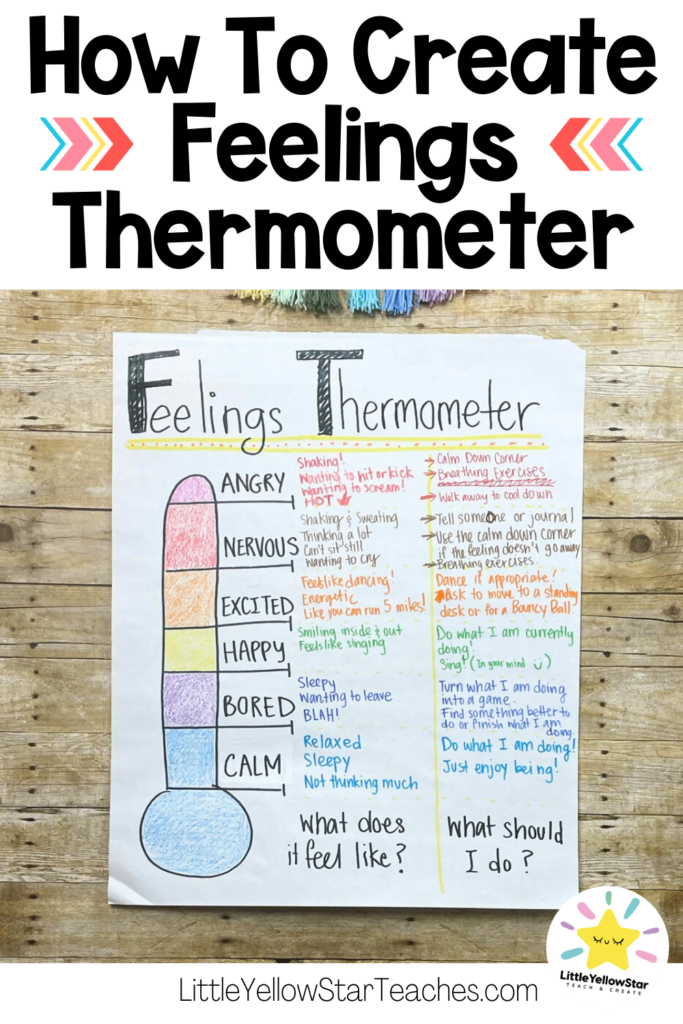
What Are Your Thoughts?
The Feelings Thermometer is a great visual tool to help children become more emotionally aware. As educators and caregivers, our mission is to equip the young ones with the skills to understand and navigate their emotional worlds. With its vivid visuals and structured approach, the thermometer offers an accessible and effective means to that end. It’s a great tool to have in the Calm Down Corner or even as an introduction to emotional awareness.
So what do you think? Are you going to create one, or are there other excellent visual tools that can help students with emotional awareness that you would like to suggest?
Whether you are creating a Class Feelings Thermometer or a Family Feelings Thermometer, I would love to see it! Tag me on Instagram @LittleYellowStarTeaches!
Bye for now,
Prima from LittleYellowStar
* * *
Other Blog Posts That You Might Enjoy:
- How To Create A Calm Down Corner In The Classroom
- 11 Classroom Essential First Year Teacher Must Haves That Won’t Break The Bank
- Meaningful And Fun Back To School Activity: Create A Classroom Wreath!
Post References:
- Eisenberg, N., Spinrad, T. L., & Eggum, N. D. (2010). Emotion-related self-regulation and its relation to children’s maladjustment. Annual Review of Clinical Psychology, 6, 495-525.
- Zins, J. E., Bloodworth, M. R., Weissberg, R. P., & Walberg, H. J. (2004). The scientific base linking emotional learning to student success and academic outcomes. Building academic success on social and emotional learning: What does the research say?, 3-22.

